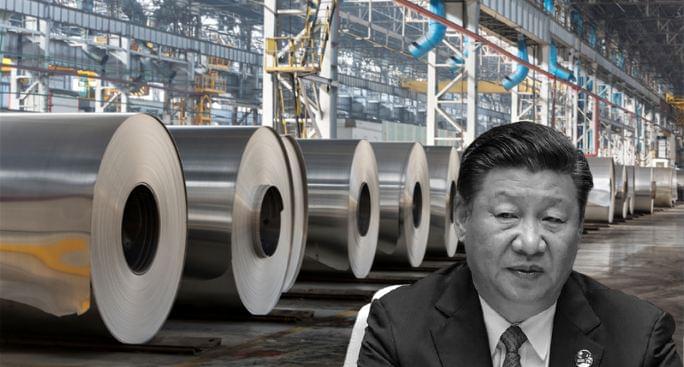A breakthrough in energy-efficient water infrastructure!
Category: energy – Page 250

El Salvador Officially Starts Mining Bitcoin Using Power From an Actual Volcano
The volcano bitcoin mining is also super eco-friendly: 3.
El Salvador has officially begun to mine Bitcoin using the power harnessed from an honest-to-god volcano — and the so-called “volcanode” has already made 0.00599179 bitcoin, or about $269, according to a tweet by president Nayib Bukele.
“We’re still testing and installing, but this is officially the first Bitcoin mining from the volcanode,” Bukele wrote.
Relying on green geothermal energy to mine Bitcoin makes a lot of sense given that the process is extremely power intensive.
COP26. Leaks, Lies & Corrupt Self Interest. My Response
I woke up this morning, saw the COP26 headlines and was so irate I had to share my thoughts.
Please excuse this unplanned video.
I woke to headlines this morning that made me so mad I just had to set up my camera to give my thoughts.
My next videos will be on power, precision fermentation and biochar so keep your eyes open.
And remember the future is NOT someone else’s problem.

China is shutting down Aluminium, Textile and many more industries
China is losing the most basic necessity of human civilisation-electricity. Till now, we only knew how the Chinese steel mills, aluminum manufacturing and power sector may be suffering in lack of thermal coal. However, China’s power woes could be much bigger and brutal than what we imagined.
Javier Blas, Chief Energy Correspondent at Bloomberg News, tweeted, “CHINA ENERGY CRUNCH: The electricity shortages in China are worsening, and widening geographically. It’s getting so bad Beijing is now asking some food processors (like soybean crushing plants) to shut down.” A report says, “from aluminum smelters to textiles producers and soybean processing plants, factories are being ordered to curb activity or — in some instances — shut altogether.

Elon Musk’s plan for Tesla, Starlink, and Boring Company in India
E Elon Musk’s plan for Tesla, Starlink, and Boring Company in India: Could the next Elon Musk Tesla empire be in India, a country that he tweeted about entering, be it for cars or helping power the country with renewable energy and there is already movement in India when it comes to Starlink internet service.
Elon Musk visited the Tesla factory in California to the Prime Minister of India(Mr. Narendra Modi). The prime minister is interested in driving India’s technological innovation and wants to see Tesla’s role in renewable energy.
India is ready to provide incentives for Tesla to come to the country, incentives that will reduce the cost of production in India compared to China.

Oregon company’s iron battery breakthrough could eat lithium’s lunch
The world’s electric grids are creaking under the pressure of volatile fossil-fuel prices and the imperative of weaning the world off polluting energy sources. A solution may be at hand, thanks to an innovative battery that’s a cheaper alternative to lithium-ion technology.
SB Energy Corp., a U.S. renewable-energy firm that’s an arm of Japan’s SoftBank Group, is making a record purchase of the batteries manufactured by Energy Storage Systems. The Oregon company says it has new technology that can store renewable energy for longer and help overcome some of the reliability problems that have caused blackouts in California and record-high energy prices in Europe.
The units, which rely on something called “iron-flow chemistry,” will be used in utility-scale solar projects dotted across the U.S., allowing those power plants to provide electricity for hours after the sun sets. SB Energy will buy enough batteries over the next five years to power 50,000 American homes for a day.

The Country of Lebanon’s Entire Electric Grid Just Collapsed
Lebanon’s entire electric grid collapsed on Saturday when the country’s two main power stations ran out of fuel.
For months, the country had been providing citizens with a few hours of electricity a day, according to The Washington Post. Then yesterday, Lebanon’s state-owned power stations, Deir Ammar and Zahrani, ran out of diesel fuel leaving the entire country with no electricity. The outage is expected to last days.
To solve the situation, the Lebanese government is attempting to get emergency fuel from the army and other sources until the country receives and distributes a shipment of oil from Iraq.

The Mad Science Plan to Power the World With Poop
Circa 2019
Most people don’t give a second thought to the poop they flush away. But perhaps they should, because the energy contained within our repellent remains is impressive.
If you let poop fester—and you probably shouldn’t in polite company—bacterial digestion will produce a methane-rich ‘biogas’ that can be harnessed for energy. You can also dehydrate a deuce to make powdery fuel or combustible bricks with a similar energy content to coal. These schemes may sound outlandish, but wastewater plants all over the developed world take advantage of this salvageable energy to subsidize their operations. One UK-based treatment plant, for example, gets 50 percent of its power using poop.

CO Meeting Organizer EPSC2021
Water production from lunar regolith through carbothermal reduction modelling through ground experiments.
PDF | Condensed matter systems act as mini-universes with emergent low-energy properties drastically different from those of the standard model. A case… | Find, read and cite all the research you need on ResearchGate.